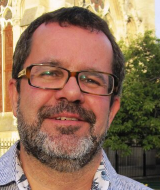Family and Kinship in East London revisited
As well as being the 75th anniversary of the Beveridge Report, 2017 also marks the 60th anniversary of the publication of Family and Kinship in East London, Michael Young and Peter Willmott’s classic account of working-class community in post-war Bethnal...
As well as being the 75th anniversary of the Beveridge Report, 2017 also marks the 60th anniversary of the publication of Family and Kinship in East London, Michael Young and Peter Willmott’s classic account of working-class community in post-war Bethnal Green. Writing as passionate small state socialists, Young and Willmott sought to celebrate the vibrancy of working-class community life in London’s East End. They stressed the need for planners, politicians and social work professionals to understand the distinctive social and cultural practices of working-class life, and to heed what they said was people’s strongly expressed desire to continue to live where they had been ‘born and bred’. For Young and Willmott, mutually reinforcing attachments to family and place defined working-class ‘community’.
In essence, Young and Willmott were offering a left-libertarian critique of the inflexibility and dirigism of the Beveridgian welfare state. In 1957, when Family and Kinship was published, British housing policy was dominated by the doctrine of ‘overspill’ development. The goal of post-war planning had been to reduce urban overcrowding and pollution by encouraging both people and industry to migrate to new out-of-town sites, mostly situated beyond the newly-designated ‘green belts’ established around Britain’s sprawling conurbations. It was this policy which shaped the ambitious programme of post-war new towns, like Stevenage, Harlow and Crawley, as well as the less dramatic town expansion scheme which encouraged existing towns to build ‘overspill’ estates for displaced city dwellers (the population of Thetford, in rural Norfolk, quadrupled in size in barely a decade under this programme).
On the surface, there appear to be strong analogies with current practices which have seen tenants across London ‘decanted’ to distant (often very distant) locations in order to cut expenditure and unlock the inflated market value of municipal housing estates through redevelopment. But it is important to remember two things. Firstly, as Young and Willmott themselves readily acknowledged, in the 1950s people were generally moving to modern new homes vastly superior to the over-crowded, dilapidated properties they previously occupied. Secondly, most people wanted to move out – not just because they wanted to have a home of their own, with ‘their own front door’, but because they wanted their children to grow up in a safer, cleaner environment than Britain’s inner-cities could offer. Young and Willmott were much less frank about this. Indeed, on the basis of a case-study of 41 Bethnal Green families who had moved to the out-of-town estate they called Greenleigh (Debden in suburban Essex), they insisted that ‘the majority wish to stay in the East End’.
Family and Kinship in East London paints a starkly contrasting picture of social life in the two districts. The street life of Bethnal Green is said to be dominated by ‘mateyness’ and bon homie, whereas at Debden social relations are said to be ‘window to window, not face-to-face’. Sadly most of the original field-notes from the pair’s research have been lost, but in recent years two parcels of case-notes have been found at the Young Foundation headquarters in Bethnal Green (formerly the Institute of Community Studies) and deposited with Michael Young’s personal papers in Cambridge. In all, field-notes survive from over eighty interviews that the pair conducted between 1953 and 1955.
I discuss the implications these field-notes raise for Young and Willmott’s thesis at length in a recent article in the Historical Journal. Three things stand out. Firstly, Young and Willmott exaggerated the contrast between social life in Bethnal Green and Debden. Although they suggest that it’s only in Debden that suburban isolation and status consciousness lead people to try and ‘keep themselves to themselves’, the original field-notes show that this was something that Bethnal Greeners also proclaimed on a regular basis (so much so that on one occasion Young scribbles ‘Again!’ in the margin of his notes). Secondly, the field-notes from Bethnal Green suggest that family life was more fractious, and kinship ties considerably weaker, than Young and Willmott claimed. Thirdly, hardly any of the Debden residents displayed the slightest inclination to return to Bethnal Green. Some might feel nostalgic about their old haunts and connections, but they had known what they were doing when they chose to move out of town. Unwilling to live in flats – the only option available for people rehoused locally in Bethnal Green – they had made a positive, informed decision to try life on an out-of-town estate so that they could have a new house with a garden. Crucially, they gave no hint that they felt themselves to have been ‘decanted’ for the benefit of others; quite the reverse. Debden families saw their leafy, low-density estate, with its modern, well-appointed homes, as proof that their lives were valued by the state, and that the hardships and inequalities that had dominated working-class life for generations really were to be banished in the post-war world.
The contrast with the experience of today’s social housing tenants could hardly be starker.
